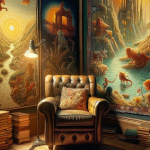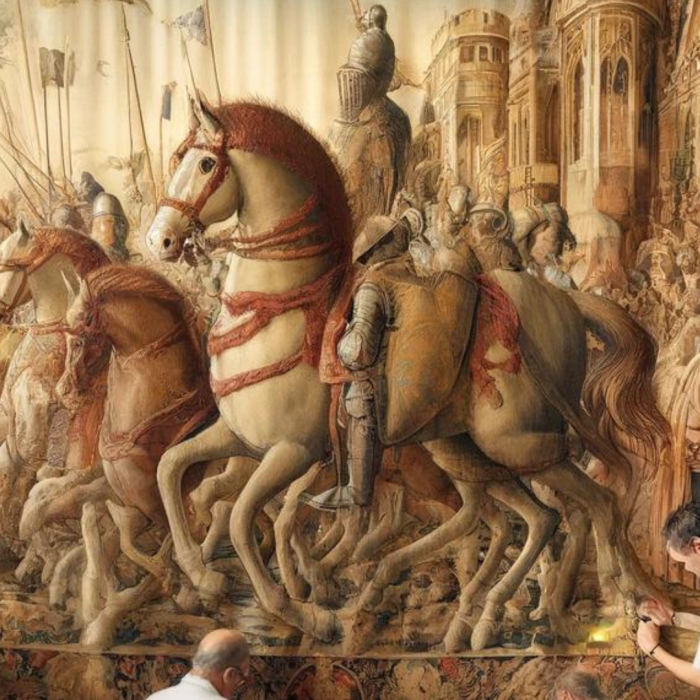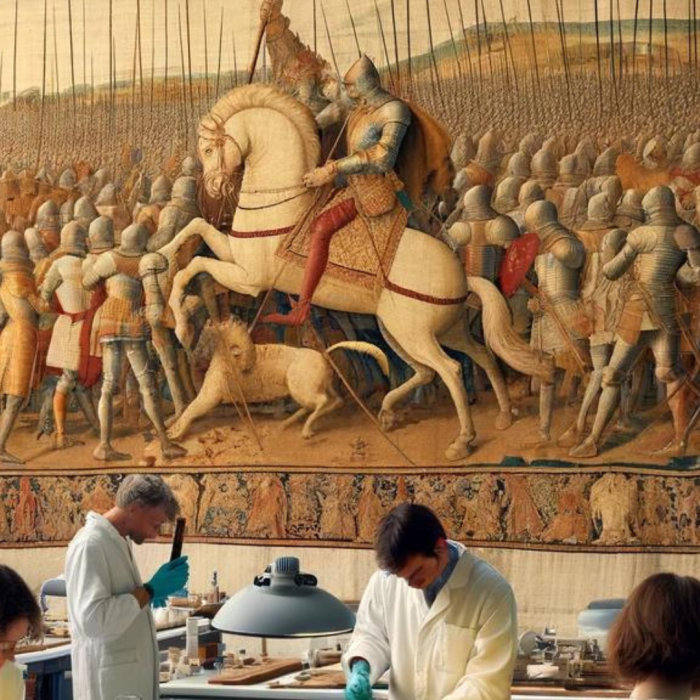The use of Tapestries in Interior Design
Brief history of tapestries in interior design
Tapestries have a rich history deeply intertwined with the evolution of interior design. Dating back to ancient civilizations, tapestries have adorned the walls of homes, castles, and palaces, adding both beauty and functionality to interior spaces. Let’s delve into the fascinating journey of tapestries in interior design.
Ancient Origins The origins of tapestries can be traced back to ancient Egypt, Greece, and Rome. These early civilizations used woven textiles not only for decorative purposes but also for insulation and to divide living spaces. Tapestries were often made from luxurious materials such as silk and wool, showcasing intricate designs depicting scenes from mythology, nature, and daily life.
Medieval and Renaissance Era Tapestries gained prominence during the medieval and Renaissance periods, particularly in European countries like France, Belgium, and Italy. Nobles and royalty displayed tapestries in their castles and palaces as symbols of wealth, power, and cultural refinement. These tapestries depicted grandiose narratives, religious themes, and elaborate landscapes, serving as both decorative elements and historical records.
Baroque and Rococo Influences The Baroque and Rococo eras witnessed a flourishing of tapestry artistry. Opulent designs featuring ornate motifs, floral patterns, and intricate borders became prevalent. Tapestries were used not only on walls but also as upholstery for furniture, draperies, and bedcovers, contributing to the overall opulence and grandeur of interior spaces.
19th Century Revival While the Industrial Revolution brought technological advancements and mass production, it also sparked a renewed interest in traditional crafts like tapestry weaving. Artisans and designers revived ancient techniques, creating exquisite tapestries that appealed to a broader audience. Tapestries adorned the parlors and salons of affluent homes, reflecting a blend of historical nostalgia and artistic innovation.
Modern Adaptations In the 20th and 21st centuries, tapestries evolved to suit changing design trends and lifestyles. From traditional handwoven pieces to machine-produced replicas, tapestries became more accessible to a wider range of consumers. Interior designers began incorporating tapestries into diverse settings, including homes, offices, hotels, and public spaces, blending heritage with contemporary aesthetics.
Tapestries in Contemporary Interior Design Today, tapestries continue to hold a prominent place in interior design, offering versatility, warmth, and artistic flair. Homeowners use tapestries to add color, texture, and personality to their living spaces, whether in traditional, bohemian, or minimalist styles. In offices and commercial settings, tapestries contribute to a welcoming atmosphere, showcasing creativity and cultural sophistication.
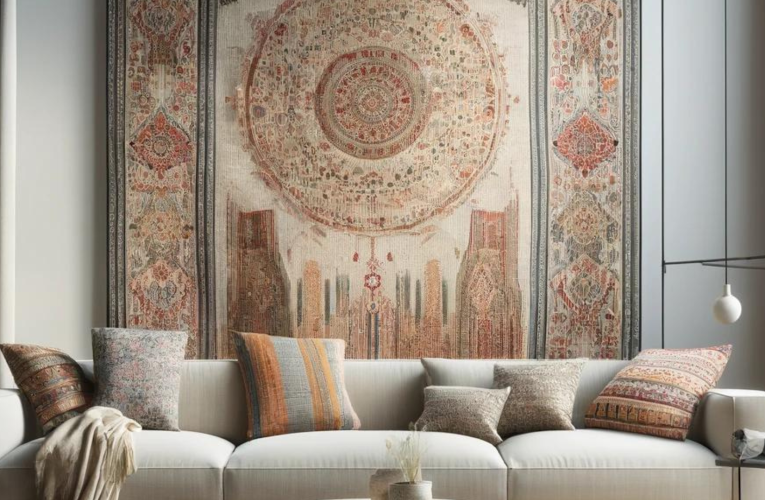
Overview of the blog's focus on tapestries in home and office interior design
The blog’s focus on tapestries in home and office interior design entails a comprehensive exploration of how tapestries are utilized to enhance the aesthetic appeal and functionality of interior spaces. Here’s an overview of what such a blog might cover:
- Introduction to Tapestries: The blog would begin by introducing tapestries as woven textile artworks traditionally used as wall hangings. It would delve into their historical significance and evolution from being primarily functional to becoming decorative elements in interior design.
- Importance in Interior Design: The focus keyword “interior design” would be emphasized, highlighting the crucial role tapestries play in transforming the ambiance of both home and office spaces. This section would discuss how tapestries contribute to creating a visually appealing, harmonious, and inviting environment.
- Home Interior Design with Tapestries: Here, the blog would elaborate on various ways tapestries can be incorporated into home interiors. This could include using tapestries as focal points in living rooms, bedrooms, or dining areas, and exploring different styles such as traditional, modern, or eclectic.
- Office Interior Design with Tapestries: Switching focus to office spaces, the blog would discuss how tapestries can be integrated into professional environments to add sophistication, warmth, and a touch of creativity. It might suggest using tapestries in conference rooms, reception areas, or private offices to enhance the overall ambiance.
- Design Tips and Trends: The blog would provide practical tips and insights on selecting the right tapestries based on interior design styles, color schemes, and spatial considerations. It might also discuss current trends in tapestry design and how to incorporate them effectively.
- Functional and Aesthetic Benefits: This section would highlight the dual benefits of tapestries, including their decorative appeal and functional aspects such as sound absorption, insulation, and texture enhancement in interior spaces.
- Maintenance and Care: Addressing the longevity of tapestries, the blog would offer advice on proper maintenance, cleaning techniques, and preservation methods to ensure these artworks remain vibrant and durable over time.
- Inspiration and Examples: The blog would conclude with inspirational examples, possibly featuring real-life interior design projects showcasing the innovative use of tapestries in diverse settings, providing readers with ideas and inspiration for their own spaces.
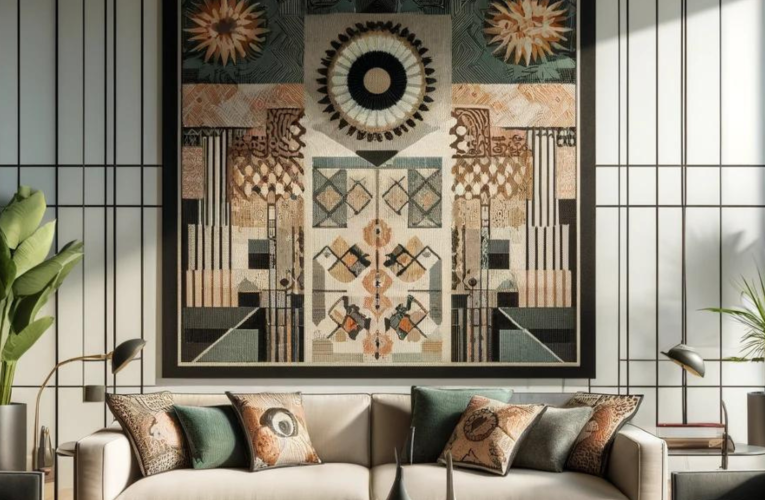
Overview of how tapestries are represented in literature and popular culture
Tapestries have held a significant place in human history, not just as decorative items but also as symbols of culture, wealth, and storytelling. In literature and popular culture, tapestries are often used to convey various themes and messages, adding depth and richness to the narrative. Let’s delve into how tapestries are represented in these realms:
Historical Significance: Tapestries are often depicted in literature to highlight their historical significance. They serve as reminders of a bygone era, showcasing the craftsmanship and artistic skills of the past. Authors may describe the intricate designs, materials used, and the labor-intensive process of creating these masterpieces.
Symbolism and Metaphor: Tapestries are rich in symbolism and metaphorical possibilities. They can represent the intricate threads of fate, the weaving together of different lives or storylines, or the layers of history and culture woven into a society. In literature, tapestries are sometimes used as a metaphor for the complexities of life and human relationships.
Wealth and Status: In both literature and popular culture, tapestries are often associated with wealth and status. They adorn the halls of castles and manor houses, signifying the wealth and power of the owner. Characters who possess tapestries may be portrayed as affluent or belonging to the upper echelons of society.
Narrative Devices: Tapestries can serve as important narrative devices in literature. They may hide secrets or messages within their designs, leading characters on quests or revealing crucial plot points. Tapestries with magical properties or mystical powers are common in fantasy literature, adding an element of wonder and enchantment to the story.
Cultural Heritage: Tapestries are also used to explore cultural heritage and traditions. They can represent the folklore, myths, and legends of a particular culture, providing insights into its values and beliefs. Authors may use tapestries to evoke nostalgia or celebrate cultural identity.
Artistic Appreciation: Literature often pays homage to the artistic value of tapestries. Authors describe their beauty, the interplay of colors, and the detailed craftsmanship involved. Tapestries are celebrated as works of art that transcend mere decoration, becoming powerful storytelling tools.
Popular Culture References: Tapestries frequently appear in popular culture, from movies and TV shows to music and fashion. They are featured in historical dramas to create an authentic atmosphere or in fantasy epics to evoke a sense of grandeur. In modern contexts, tapestries are also embraced as trendy home decor items, reflecting a blend of traditional artistry and contemporary style.
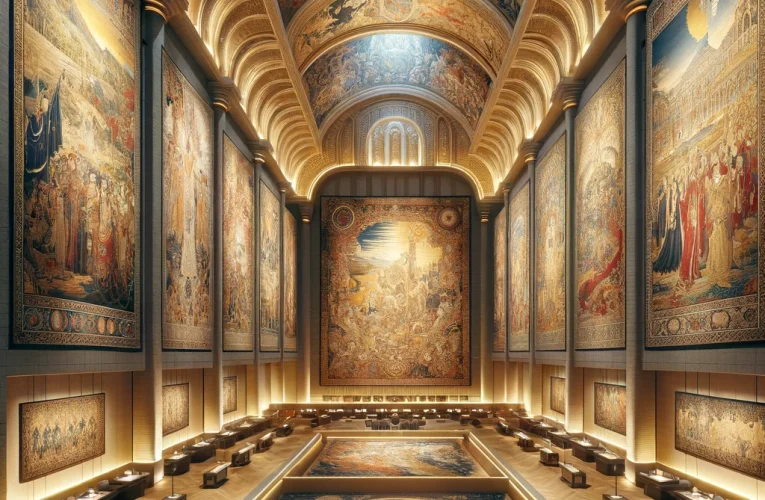
Benefits of Tapestries in Home Interior Design
Adds Warmth and Texture to Space
Tapestries are excellent for adding warmth and texture to a room. Their woven fabric creates a cozy atmosphere, making the space feel more inviting and comfortable. Whether you choose a thick, woolen tapestry for a rustic look or a lighter, silkier one for a more elegant touch, tapestries can instantly transform the feel of a room.
Enhances Aesthetic Appeal
One of the standout features of tapestries is their ability to enhance the aesthetic appeal of any space. They come in a wide range of designs, patterns, and colors, allowing you to find the perfect tapestry to complement your existing decor or serve as a focal point in the room. From traditional motifs to modern abstract designs, tapestries offer endless possibilities for customization.
Provides Versatility in Decor Styles
Whether your interior design style is traditional, contemporary, bohemian, or eclectic, tapestries can seamlessly integrate into various decor styles. They can be hung as wall art, used as throws on furniture pieces like sofas or beds, or even draped over curtain rods to add a touch of elegance to windows. This versatility makes tapestries a favorite choice among interior designers and homeowners alike.
Acts as a Sound Absorber
In addition to their decorative value, tapestries also serve a practical purpose by acting as sound absorbers. The woven fabric helps dampen noise, making rooms quieter and more conducive to relaxation or focused work. This makes tapestries a great addition to bedrooms, home offices, or any space where noise reduction is desired.
Examples of Tapestries Used Effectively in Different Rooms
- Living Room: A large, colorful tapestry hung on a prominent wall can serve as a focal point and tie together the overall decor theme of the living room.
- Bedroom: A soft, textured tapestry draped over the bed or hung above the headboard adds a touch of luxury and coziness to the bedroom.
- Office: In an office environment, tapestries can be used to add personality to the space while also helping to absorb sound, creating a more productive work environment.
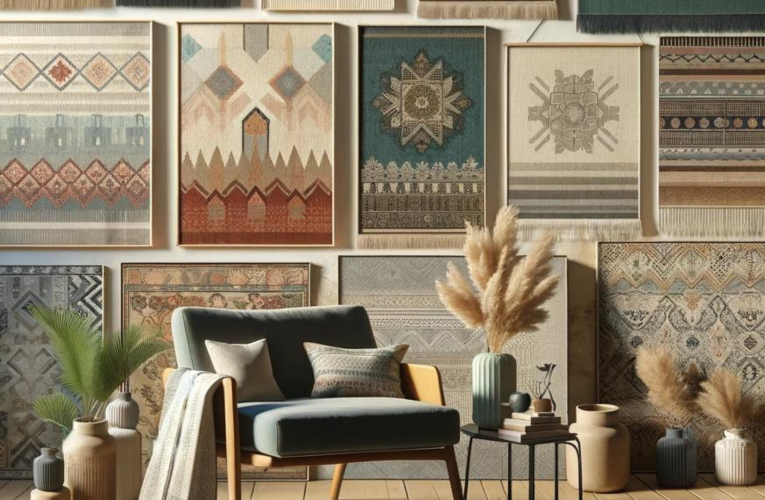
Incorporating Tapestries in Office Interior Design
Creates a professional yet inviting atmosphere
Tapestries can add a touch of elegance and warmth to office spaces, making them more welcoming for employees, clients, and visitors. The intricate designs and colors of tapestries can enhance the overall aesthetic of the office, creating a professional yet inviting ambiance.
Contributes to acoustic comfort in open-plan offices
Tapestries have acoustic properties that can help reduce noise levels in open-plan office environments. They absorb sound waves, improving acoustic comfort and creating a more peaceful work environment conducive to concentration and productivity.
Showcases company culture and values
Tapestries can be customized to reflect the company’s culture, values, and brand identity. By choosing tapestries with relevant motifs, colors, or themes, businesses can showcase their unique identity and create a cohesive design scheme that resonates with employees and visitors alike.
Tips for selecting the right tapestries for office spaces
- Provide guidance on selecting tapestries that complement the office’s overall design theme, color palette, and architectural features.
- Consider factors such as size, style, durability, and maintenance requirements when choosing tapestries for high-traffic office areas.
- Highlight the importance of quality materials and craftsmanship to ensure longevity and visual appeal.
- Suggest incorporating tapestries strategically in different areas of the office, such as reception areas, conference rooms, or collaborative spaces, to maximize their impact on the overall interior design.
- By addressing these points in the blog post, you can provide valuable insights into how tapestries can be effectively utilized in office interior design, catering to the specified focus keywords while offering practical advice and inspiration for readers interested in integrating tapestries into their workspace design.
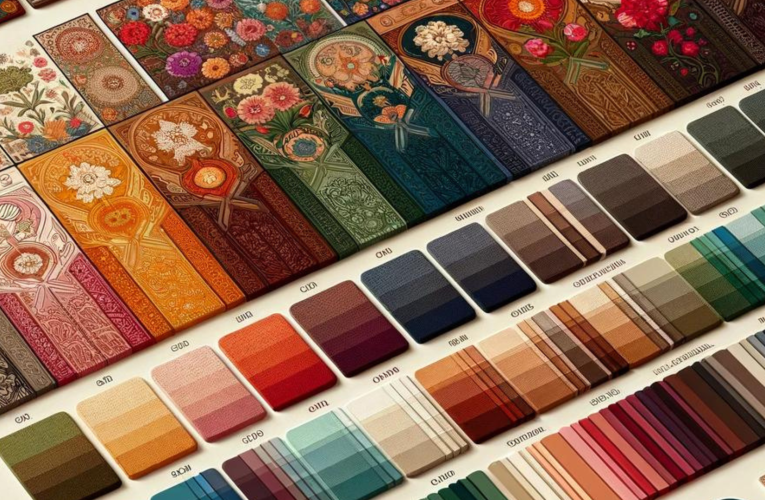
Types of Tapestries for Different Interior Design Themes
Traditional tapestries for classic and vintage interiors
Traditional Tapestries for Classic and Vintage Interiors: Traditional tapestries are perfect for creating a sense of classic elegance and vintage charm in interior spaces. These tapestries often feature intricate designs, historical motifs, and rich colors that evoke a bygone era. They are ideal for traditional homes, heritage properties, and spaces that embrace timeless aesthetics. Traditional tapestries can be used as wall hangings, draperies, or even as upholstery fabric for furniture pieces to add a touch of old-world grandeur to any room.
Modern and Abstract Tapestries for Contemporary Spaces
For contemporary interiors that prioritize sleekness and innovation, modern and abstract tapestries are excellent choices. These tapestries often feature geometric patterns, bold colors, and avant-garde designs that complement modern furniture and decor. They can add a pop of visual interest to minimalist spaces or serve as focal points in rooms with clean lines and a contemporary aesthetic. Modern tapestries can be used creatively, such as suspended from the ceiling as room dividers or framed as unique art pieces on walls.
Nature-Inspired Tapestries for a Tranquil Ambiance
Nature-inspired tapestries bring the beauty of the outdoors inside, creating a serene and tranquil ambiance in interior spaces. These tapestries often depict landscapes, botanical motifs, wildlife scenes, or floral patterns that connect occupants with nature. They are perfect for creating a calming atmosphere in bedrooms, living rooms, or meditation spaces. Nature-inspired tapestries can also complement eco-friendly design themes and biophilic interiors that aim to enhance well-being by incorporating natural elements into the built environment.
Custom and Personalized Tapestries for Unique Design Statements
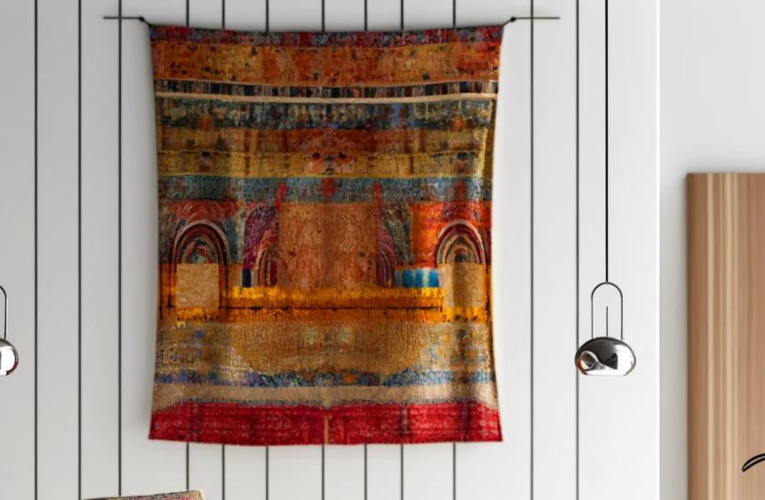
For those seeking a truly unique and personalized touch in their interior design, custom and personalized tapestries offer endless possibilities. These tapestries can be customized with personalized artwork, family crests, meaningful quotes, or photographs, allowing individuals to create one-of-a-kind design statements that reflect their personality and style. Custom tapestries can be tailored to fit specific color schemes, sizes, and themes, making them versatile additions to any home or office interior design project.
By exploring these different types of tapestries and their suitability for various interior design themes, you can inspire readers to consider the versatility and artistic potential of tapestries in enhancing home and office spaces. Whether aiming for a classic, contemporary, nature-inspired, or personalized design, tapestries offer a creative and impactful way to elevate interior aesthetics and create inviting, visually appealing environments.
Maintenance and Care Tips for Tapestries
Tapestries can be stunning additions to any interior design scheme, whether it’s for a home or an office. To ensure their longevity and beauty, it’s important to follow proper maintenance and care guidelines.
Regular Cleaning Methods
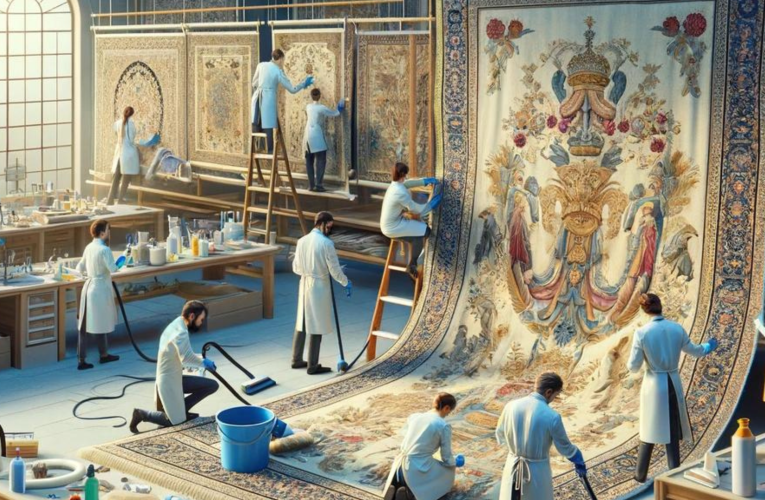
- Dusting: Start by gently dusting your tapestries regularly using a soft-bristled brush or a vacuum cleaner with a brush attachment. This helps remove surface dust and prevents it from settling into the fabric.
- Spot Cleaning: Deal with any stains or spills promptly using a mild detergent diluted in water. Test the solution on a small, inconspicuous area first to ensure it doesn’t damage the fabric. Blot the stain instead of rubbing to avoid spreading it further.
- Avoid Washing Unless Necessary: Unless your tapestry is specifically labeled as washable, avoid washing it in a machine or submerging it in water. Water can weaken the fibers and cause color bleeding or distortion.
Protection Against Fading and Damage
- Sunlight Exposure: Limit direct sunlight exposure on your tapestries as UV rays can cause colors to fade over time. Use curtains or UV-filtering window films to protect them from prolonged sun exposure.
- Humidity Control: Maintain a stable humidity level in the room where your tapestry is displayed. Excessive humidity can promote mold growth, while low humidity can lead to dryness and brittleness in the fabric.
- Avoiding Sharp Objects: Keep sharp objects such as furniture corners or jewelry away from your tapestries to prevent accidental tears or snags.
Professional Cleaning and Restoration Services
- Regular Inspections: Periodically inspect your tapestries for any signs of damage or wear. Addressing issues early can prevent further deterioration and the need for extensive repairs.
- Professional Cleaning: Consider professional cleaning services for deep cleaning and restoration of your tapestries. Experts have the knowledge and equipment to safely clean delicate fabrics and restore their original beauty.
- Restoration Techniques: If your tapestry has suffered damage or has become fragile over time, consult with professionals who specialize in tapestry restoration. They can employ techniques such as patching, reweaving, and color matching to revive your tapestry’s appearance.
Where to Find Quality Tapestries for Interior Design Projects
Online retailers specializing in tapestries
Online retailers are excellent sources for finding quality tapestries for interior design projects. These retailers often offer a wide range of designs, styles, sizes, and materials to suit various preferences and needs. You can browse through their catalogs from the comfort of your home or office, making it convenient to explore different options before making a purchase. Additionally, online retailers may provide detailed product descriptions, customer reviews, and images, allowing you to make informed decisions about which tapestry will best complement your interior design scheme.
Local stores and artisans offering handmade tapestries
Local stores and artisans are valuable resources for unique and handmade tapestries. By supporting local businesses and artisans, you not only contribute to the preservation of traditional craftsmanship but also gain access to one-of-a-kind pieces that can add character and charm to your interior spaces. Visiting local stores or artisan markets allows you to see the tapestries up close, feel their textures, and appreciate the artistry behind each piece. Furthermore, working directly with artisans may offer opportunities for customization, ensuring that the tapestry aligns perfectly with your design vision.
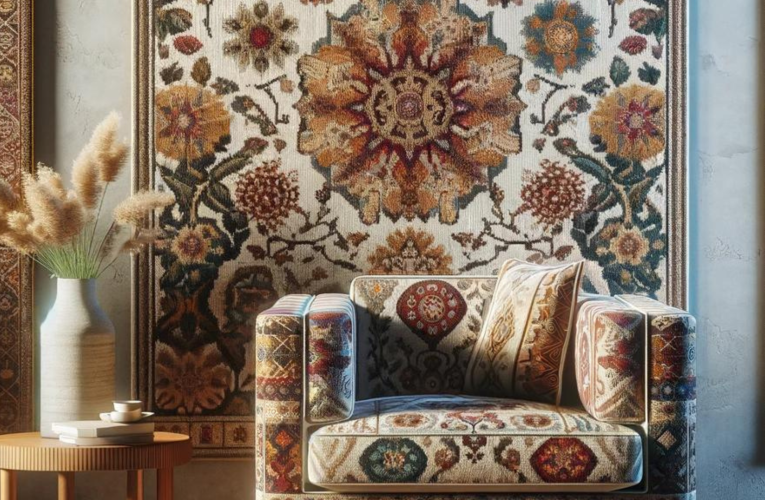
Considerations when purchasing tapestries for interior design projects
When purchasing tapestries for interior design projects, several considerations come into play to ensure you select the right pieces that enhance your home or office environment:
- Design and Style: Consider the overall design theme and style of your space. Choose tapestries that complement existing decor elements such as furniture, color schemes, and architectural features.
- Size and Placement: Determine the appropriate size of the tapestry based on the wall space available and the desired focal point. Consider the placement of furniture and other decorations to create a balanced and visually appealing arrangement.
- Material and Quality: Pay attention to the material and quality of the tapestry. Opt for durable materials that are suitable for indoor use and can withstand regular cleaning and maintenance.
- Color and Pattern: Select colors and patterns that harmonize with the surrounding environment. Bold or intricate patterns can make a statement, while subtle designs can add elegance and sophistication.
- Budget: Establish a budget for your tapestry purchases and explore options within your price range. Keep in mind that investing in quality tapestries can elevate the overall aesthetic of your interior design.
By considering these factors and exploring various sources for quality tapestries, you can enhance the visual appeal and ambiance of your home or office interior design projects effectively.

